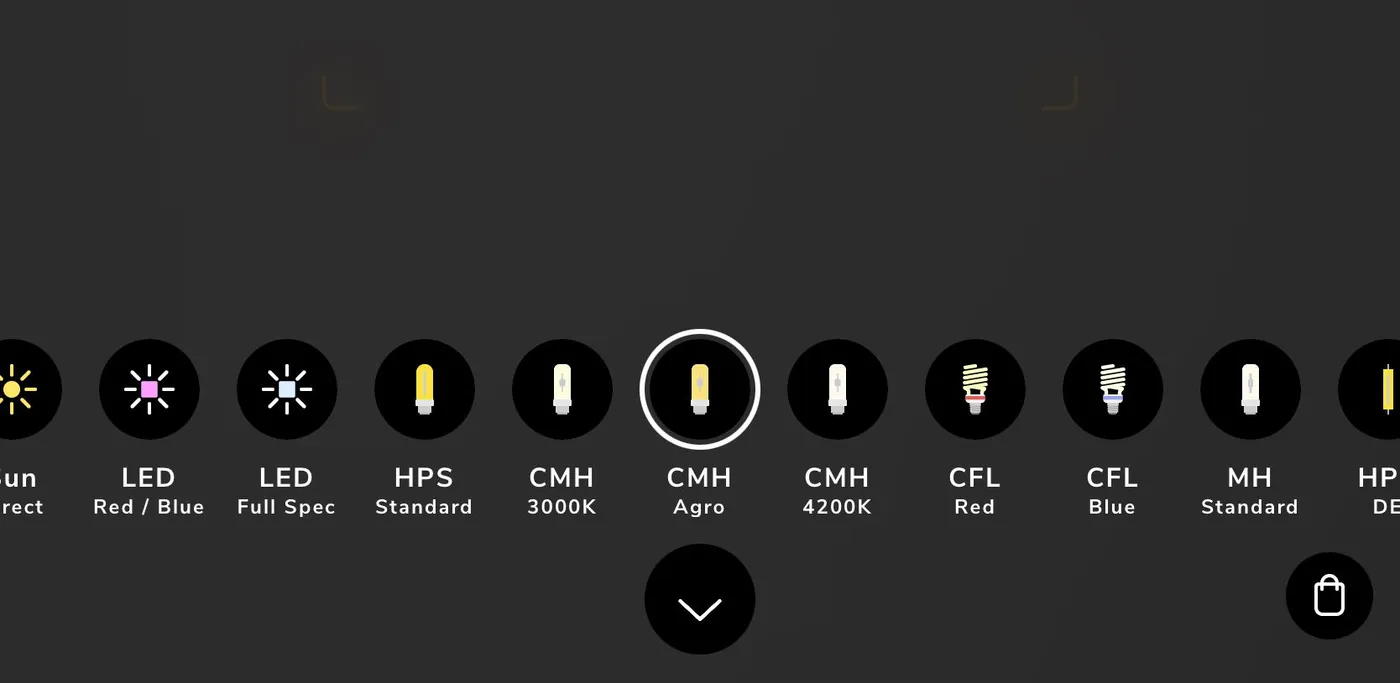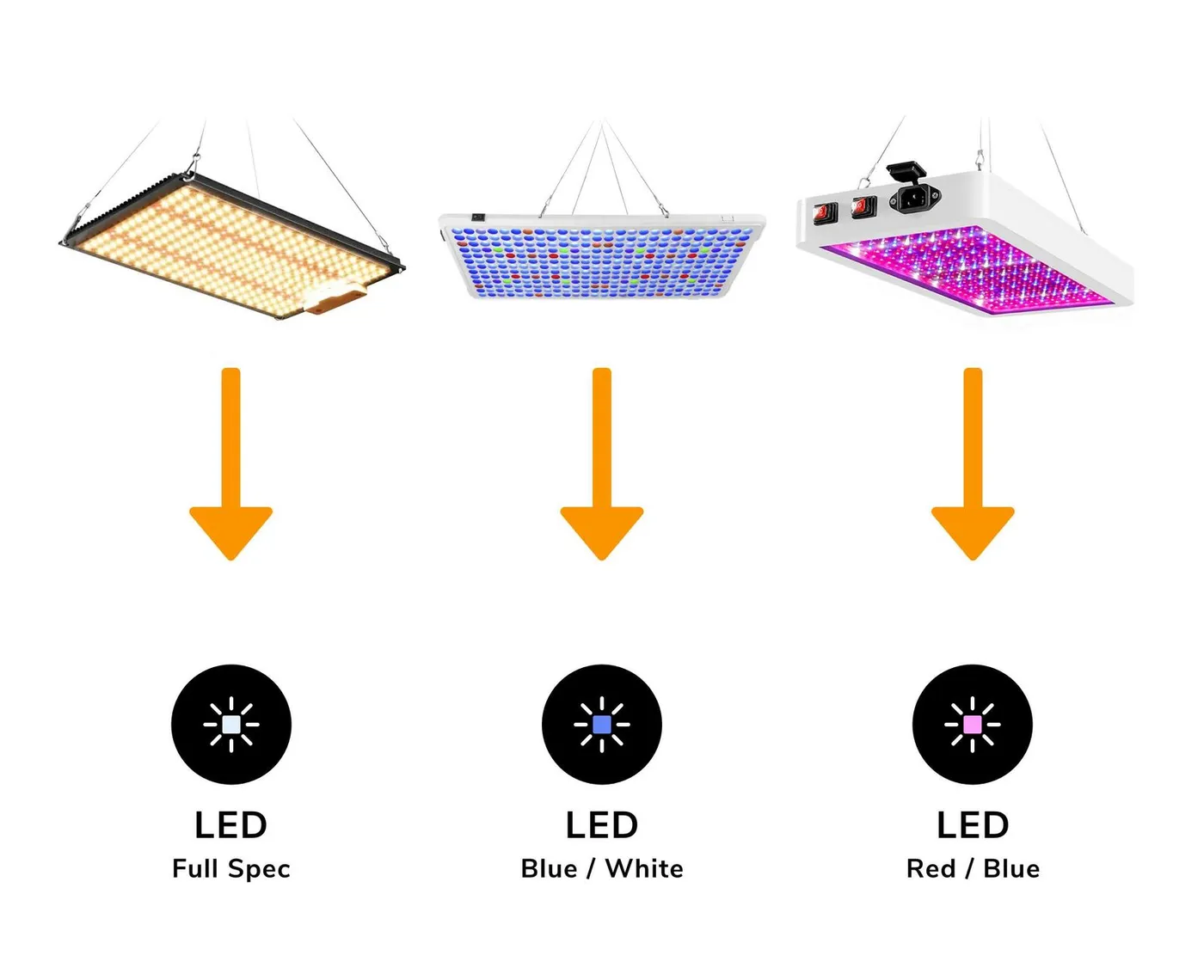
Auto-Translate
Which Light Source to Choose
Learn which setting to choose to get accurate light intensity measurements (e.g. PPFD, lux)

In order to measure PAR/PPFD accurately, it is required to select the correct light source setting based on the type of light you’re about to measure. This guide describes how to select the correct light source setting.
LED Grow Lights
If your LED grow light contains blue and red LED chips and thus looks purple, use the LED red / blue setting.
If your light is mostly blue use the LED blue / white setting.
For all other types of LEDs you should choose LED full spectrum. LED lights that have a color temperature rating ranging from 2000 K up to 7500 K are considered full spectrum. Your lamp might include some pure red (e.g. 660 nm), pure blue, ultra-violet (UV) and infra-red (IR) chips as well, nevertheless full spectrum light will appear white or yellowish.

HID Light Bulbs (HPS, MH)
If you’re using High Intensity Discharge (HID) lamps like High Pressure Sodium (HPS) light bulbs, make sure to use the Standard or Double-Ended setting based on the connector type. The Metal Halide (MH) Standard setting should be used for any MH light bulb independent of the connector type.

Ceramic Metal Halide (CMH) Light Bulbs
When using Ceramic Metal Halide (CMH), Ceramic Discharge Metal-Halide (CDM), or Light Emitting Ceramic (LEC) light bulbs, select the correct light temperature based on the information on your bulb’s packaging. CMH lamps are sometimes referred to as red / warm, which requires the CMH 3000 K setting, or blue / cold which requires the CMH 4200 K setting. Purpose-built CMH lamps for agriculture require the CMH Agro light setting. All of this information can usually be found on the packaging.
Fluorescent (FL) and Compact Fluorescent Lights (CFL)
If you’re using Fluorescent (FL) lighting or Compact Fluorescent Lamps (CFL) make sure to select the correct light temperature based on the information on your light’s packaging. If there is no exact match on light temperature, choose the setting that comes as close as possible to the indicated number.
Beware that your light may look like a fluorescent tube or CFL but uses LEDs to actually produce the light. If that is the case, please refer to the LED Grow Lights section for the right setting.
Natural Daylight / Sunlight
Choose the sun as a light source if you’re measuring natural daylight. It doesn’t matter if you’re indoors, outdoors or in a greenhouse. Please consider that window glass will, depending on its composition, block some sunlight. Thus, you will get different readings inside or outside of your greenhouse.
Measuring Multiple Different Light Sources
If you wish to measure the combined output of multiple light sources of a different type, measure each light source type individually using the correct setting. Then sum up the measurements to get the resulting total light intensity.
Didn't Find What You're Looking For?
Feel free to contact our support if you didn't find the correct light setting for your specific grow light and are still unsure which light to choose.
